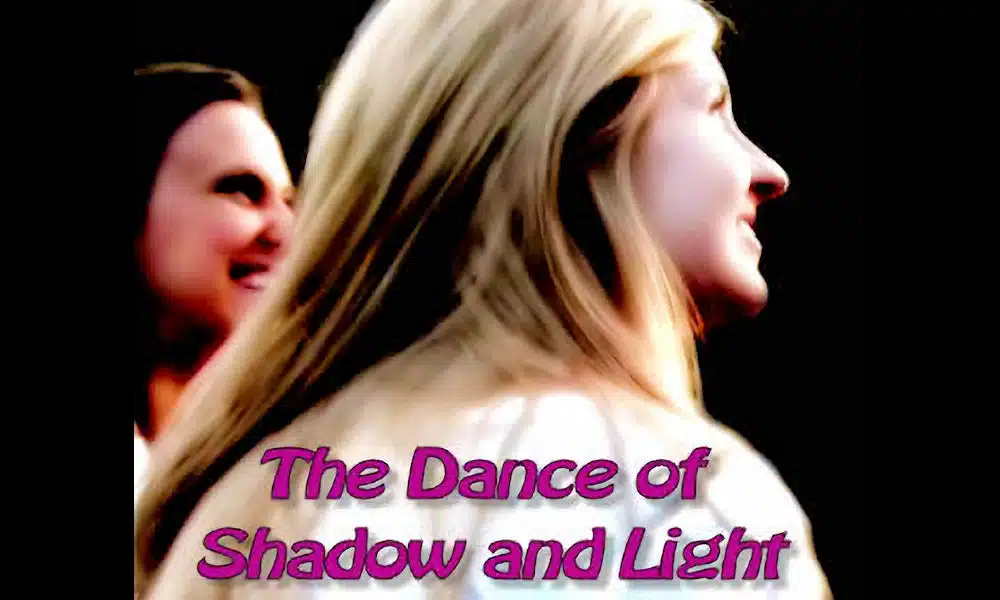The Dance of Shadow and Light is where the juice is. Here, we discover the interplay of presence and action. Learn to let go of rules, and live!

Want to learn more about living a full and meaningful life?
Want to have the best relationship ever?
Check out my books
One way artists achieve “three dimensionality” is to create the illusion of depth through the interplay of shadow and light.

A painting featuring nothing but light would be a white canvas; a picture displaying nothing but darkness would be a black canvas.
I’m sure the National Gallery in Ottawa would be glad to pay a couple of million for either (Canadian joke—the gallery bought a red canvas for several million a couple of years ago … ) but looking at either leads nowhere.
Black and white thinking, on the other hand, seems to be quite popular.
You know the drill.
The way I see it is true. All other versions are false. I’m right, you’re wrong. Your beliefs are immoral, I’m the pillar of morality.
Just a Note! Back in 1994, My first book, Stories From the Sea of Life was published. It’s now out of print, BUT is available as a pdf file. If you’d like to read more of the stories contained therein, amble over to my book site, The Phoenix Centre Press. Once there, subscribe to the site’s mailing list, and you’ll get the pdf for FREE!
I wrote a story about black and white thinking in my out of print book, Stories From the Sea of Life:
I had a few counselling sessions with a young woman, while I was counselling at a local University. She was mostly concerned with her sex life, which was not turning out as she had planned.
We discussed it at length, because there was no depth. She was in her first year, and she wanted to be in an adult relationship, and be loved. So, she had been picking up men in campus bars. She’d see a guy, think he was cute, start a conversation and end up in his bed. Or hers. The few men that hung around past morning rapidly lost interest in her, or started cheating on her. In bars.
We discussed the possibility that men in bars, on average, were not there looking for a woman to marry. They were looking for a one night stand. She thought she should be able to change their mind. She agreed, after a bit, that maybe context and location was important. After all, you don’t buy lumber at plumbing stores.
By the next session, she reported she’d managed two weeks without going to a bar. This, she thought, was good, but she said that this had diminished her chances for an adult relationship. So, she had joined the campus Liberal Party.
She had gone to a rally. She had bumped into a guy who was cute. They talked, had a sandwich. They went back to the rally. He stood behind her. His hands wandered into her clothes. She thought, “I’ve found true love!” She took him to her room. They had sex. He hadn’t been back since the next morning.
I asked her why she’d consented to sex on the first date, with a stranger.
She replied, “Because I’m a Liberal.”
I said, “Pardon me???!!!”
She said, “If you’re a Liberal and someone asks you for sex, you have to say yes. You obviously don’t understand.”
She then explained sex and relating to me, because I was obviously too stupid to get it.
“I want to be in an adult relationship, as obviously, I’m in University, and therefore should be in relationship. I want it now, and the best way to get a guy for the long-term is to have sex with him.”
I pointed out that this hadn’t yet worked.
“I just need to find the right guy! There’s new bar in town…”
End of therapy.
This particular young woman only came for therapy three times, and quit because I couldn’t see that she had no choice.
If a man wanted to have sex with her, she had to say yes.
When having sex with guys she picked up in bars caused her pain, rather than examining the core belief, she joined a political party and invented a rule that “Liberals always have sex when asked.”
A subtle move, this. She went from personal choice to an inflexible rule to a party mandate. In so doing, she freed herself from responsibility for her actions—her personal responsibility for her sex life was nil. If she got really desperate, she could blame booze.
Notice how one dimensional her approach to sex and relating is.
This is what happens, always, when we have a rigid rule—the rules in a black and white universe are both simple and absolute; they just don’t work.
When a rule fails, black and white thinkers blame others for the failure, as in our story above.
“I want to rule this out”
This can mean,
a) placing a ruler under a line, and striking the rule through, or
b) crafting an absolute rule—but notice—if I rule something out, what I don’t have is “what to do now.” I just have, “What not to do.”
Black and white thinking is what people younger than 12 do.
You tell kids the following story: “A man’s children are starving, so he steals some potatoes to feed them.” Then you ask them if what he did is “right or wrong.” Young kids will condemn the man for stealing.
Teens, on the other hand, will note the extenuating circumstances and say something like, “Stealing is wrong, but in this case he was trying to keep his kids alive, which is a good thing.”
Being able to see shades of gray is one mark of being an adult.
It can be more difficult when it’s personal. When we “take things personally,” we lock into one way of seeing things, situations, people, groups. Blaming others happens when we take things personally; we conveniently forget that the only person’s behaviour we can do something about is ourselves.
Letting go of black and white thinking is not a prescription for no beliefs.
When confronted with a seemingly insurmountable obstacle, or when our behaviour gets us undesirable results over and over, the wise person begins to look for other ways of acting and thinking.
Spending your life waiting for others to change so you don’t have to is a prescription for waiting forever.
The life well lived has three dimensions. It is alive, vital and vibrant. It begins with a palate of colour wider than one or two. It deepens, and it finds its depth at the interplay of darkness and light. In the gray. In the tones and hues and varieties. In flexibility and in balance.
This week, look at the tone of your life. The blacks, whites, grays. See how often you can broaden the palate.

